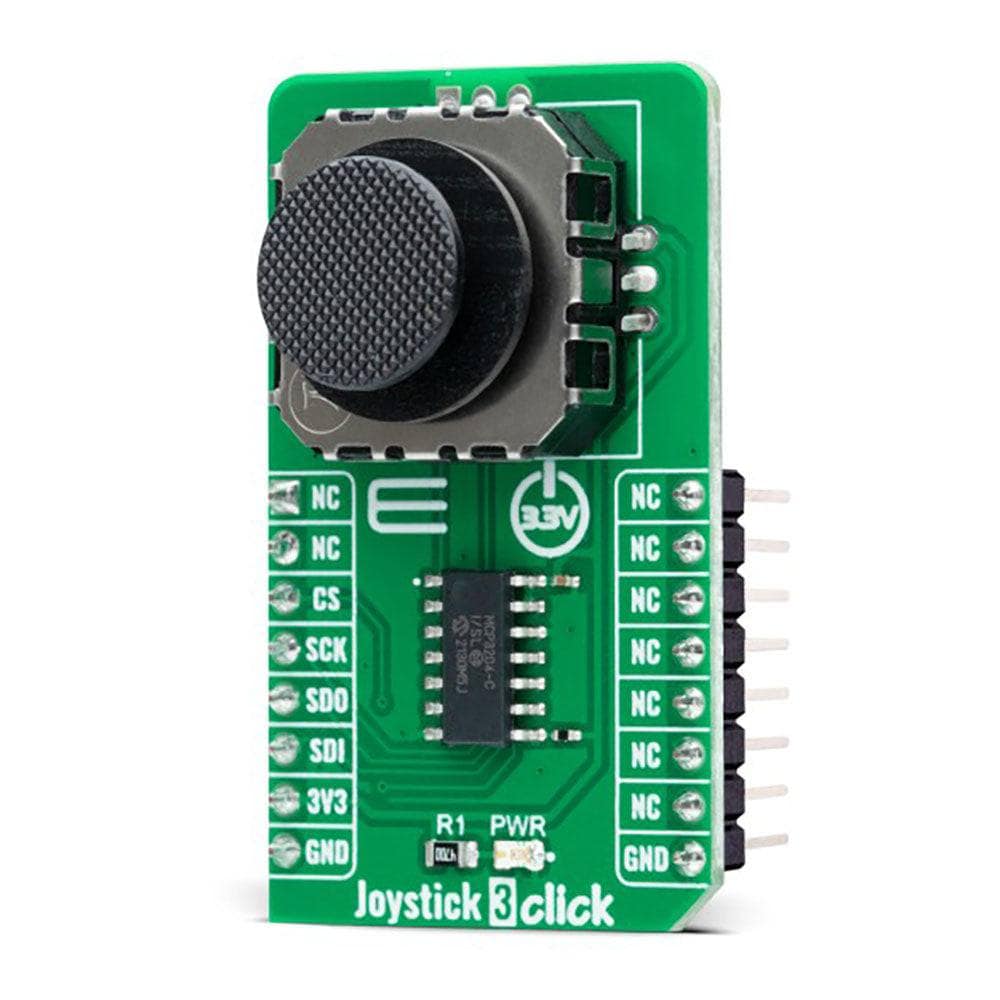
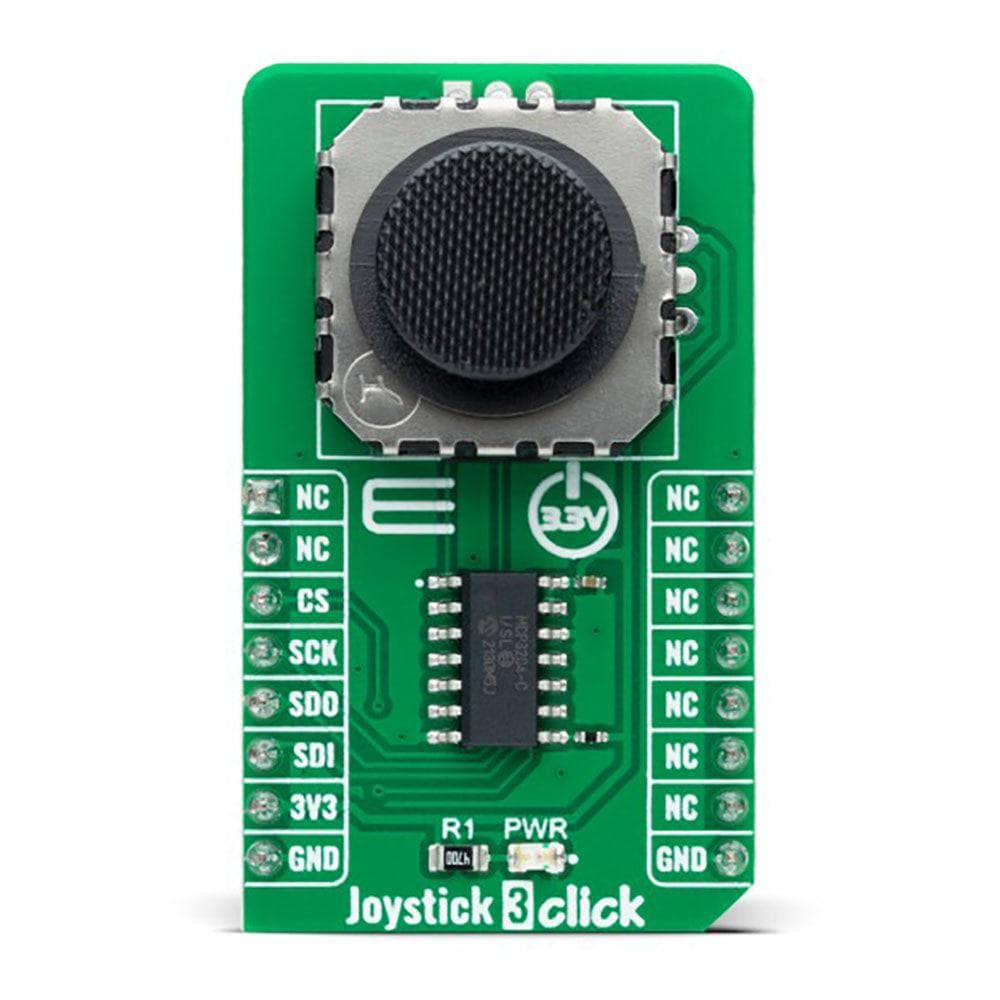
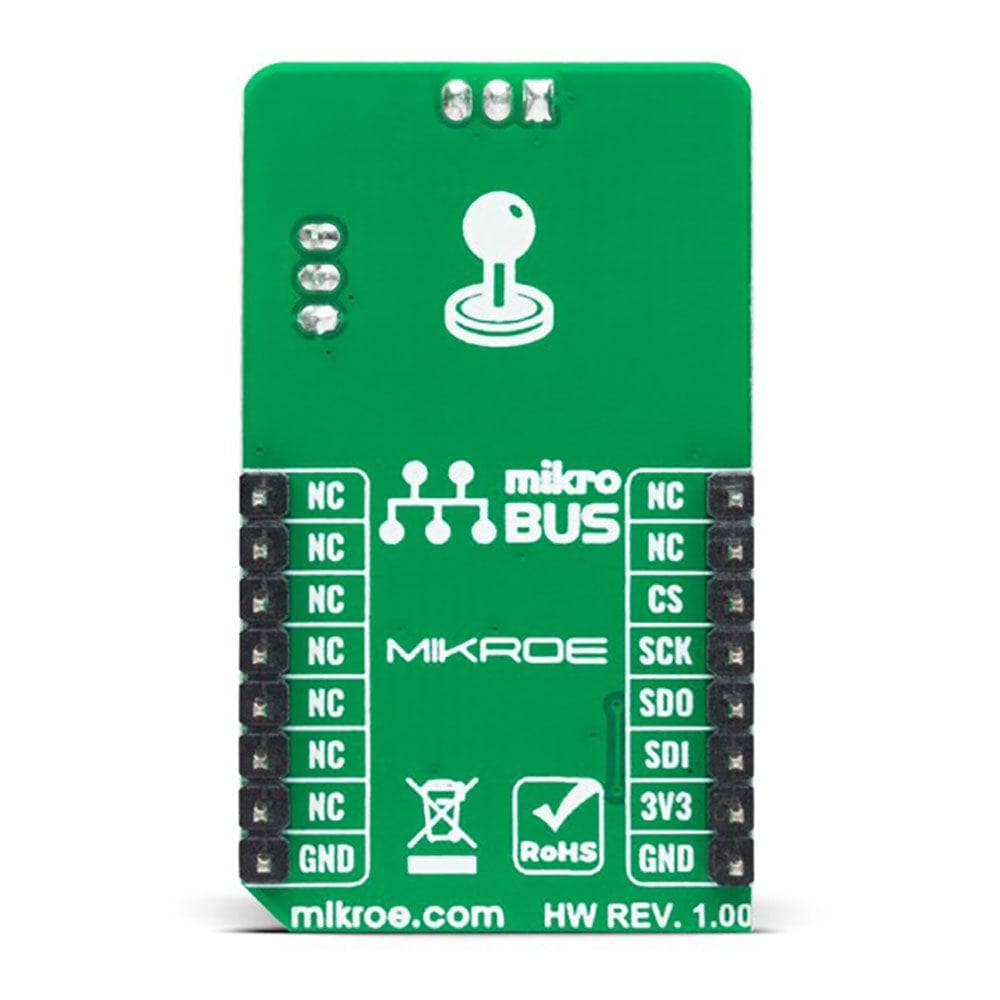
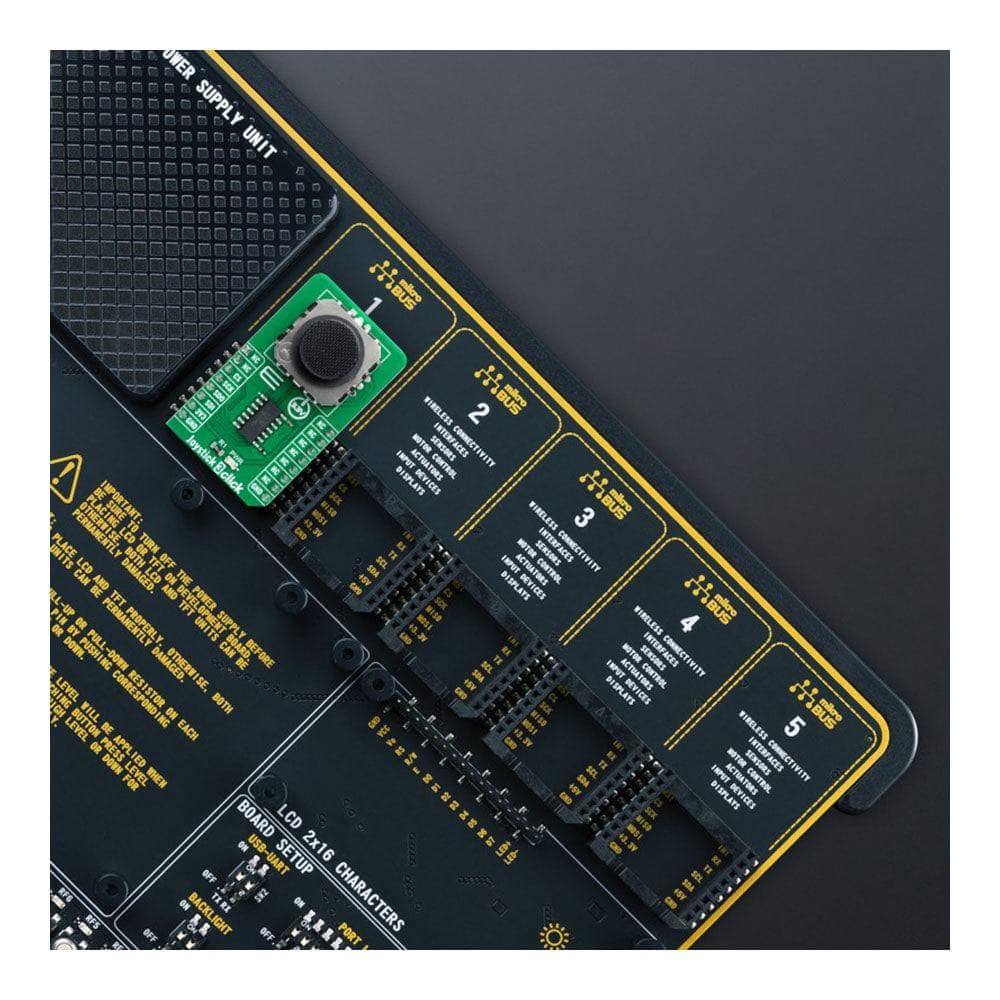
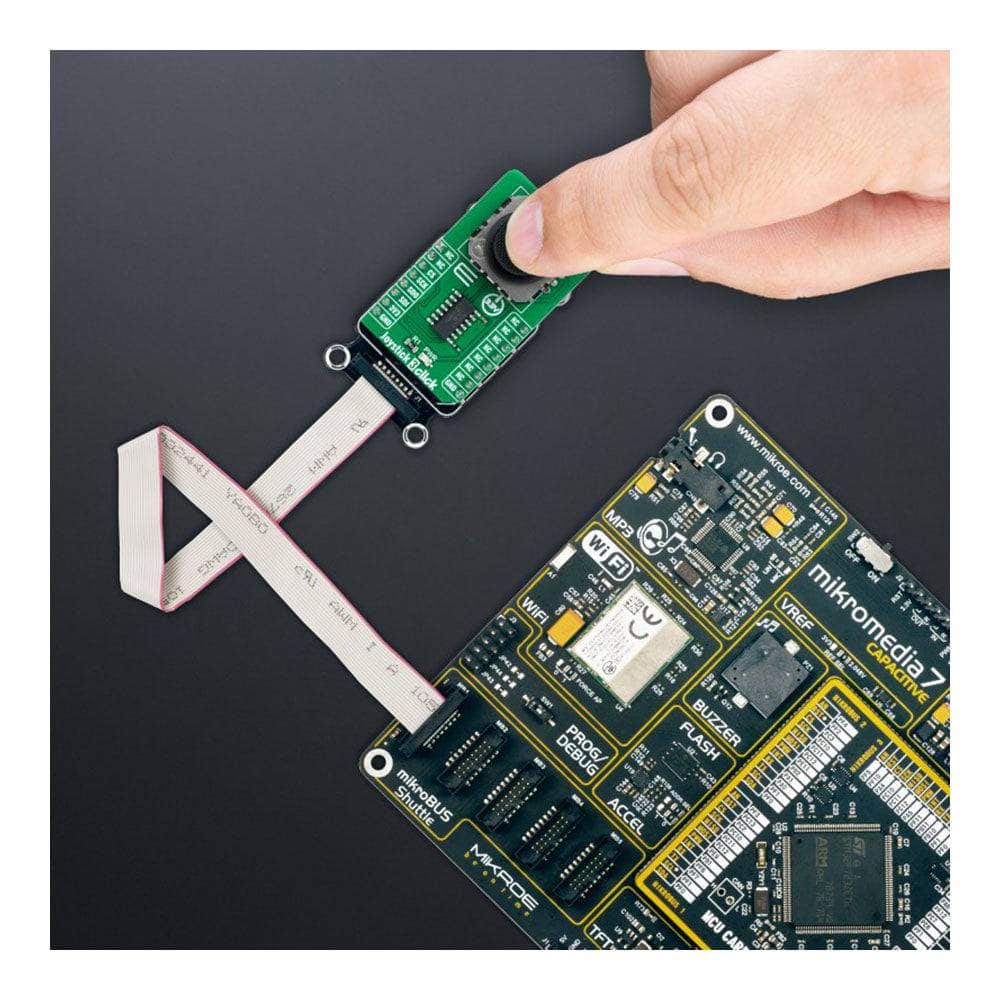
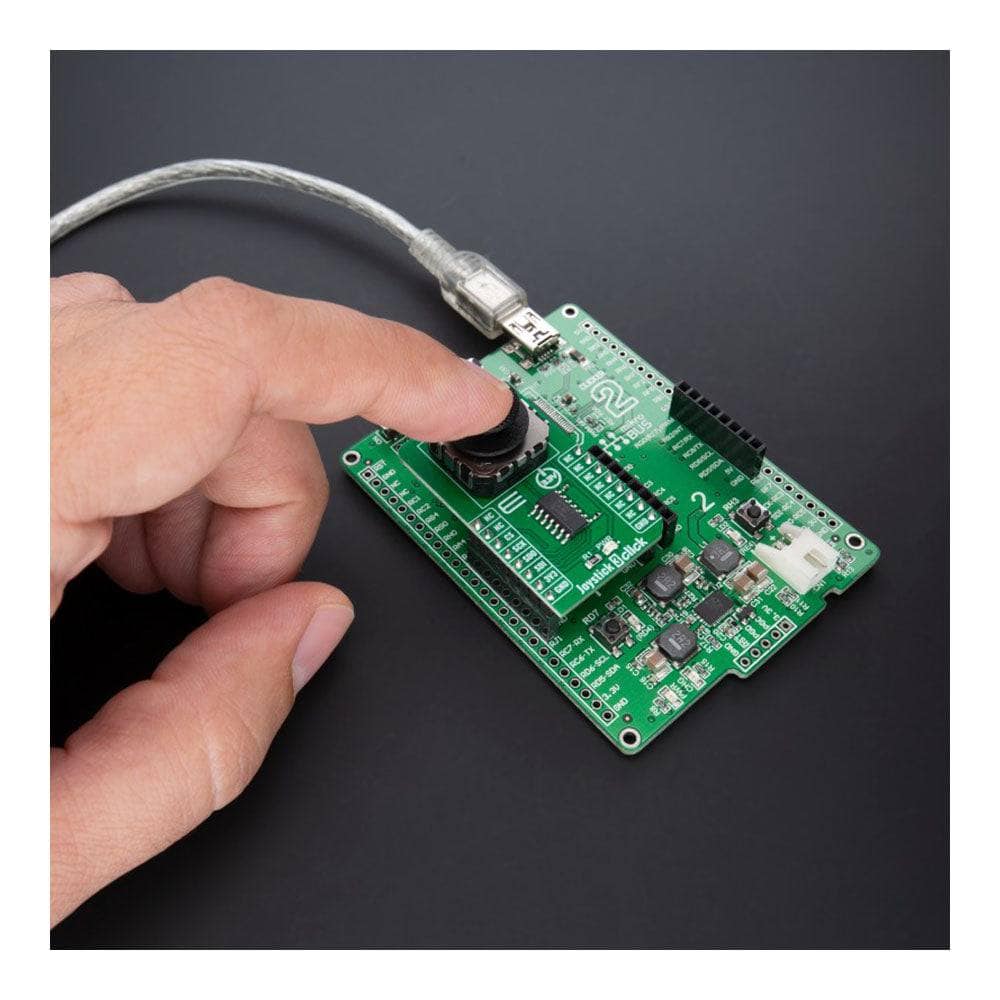
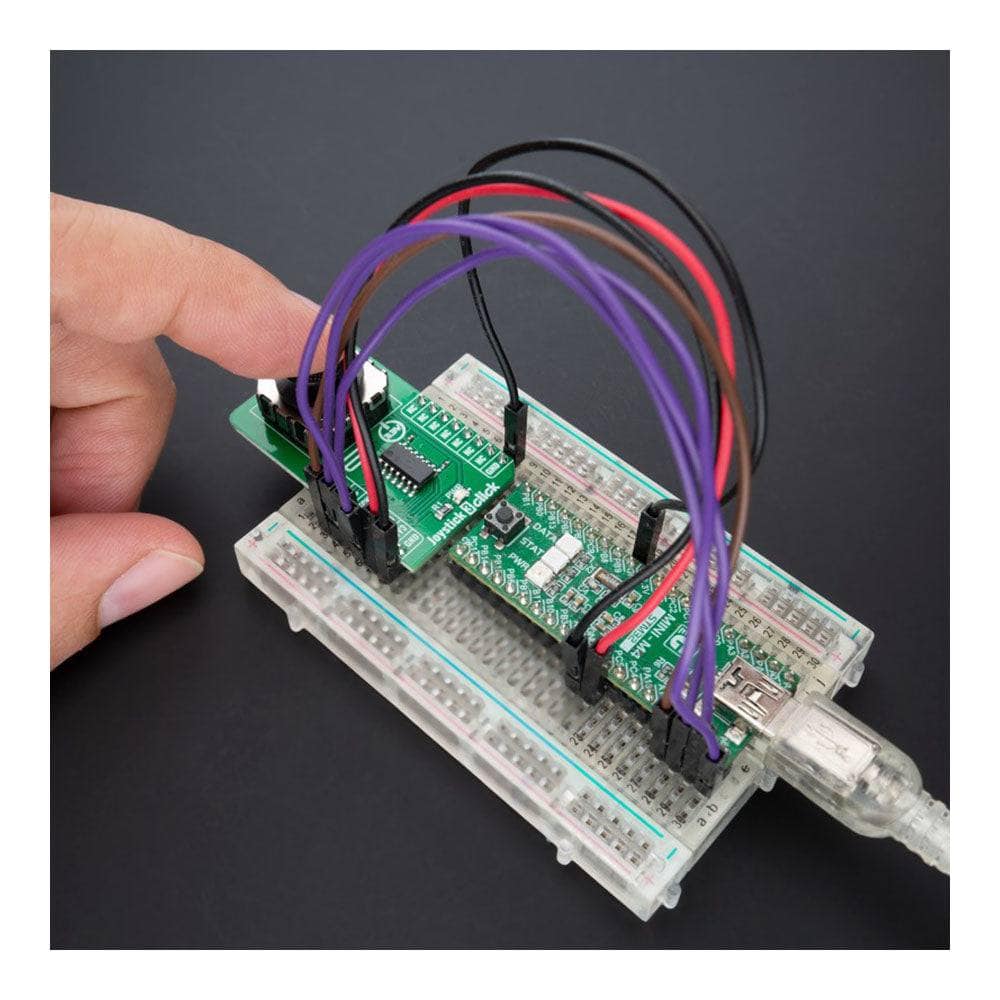
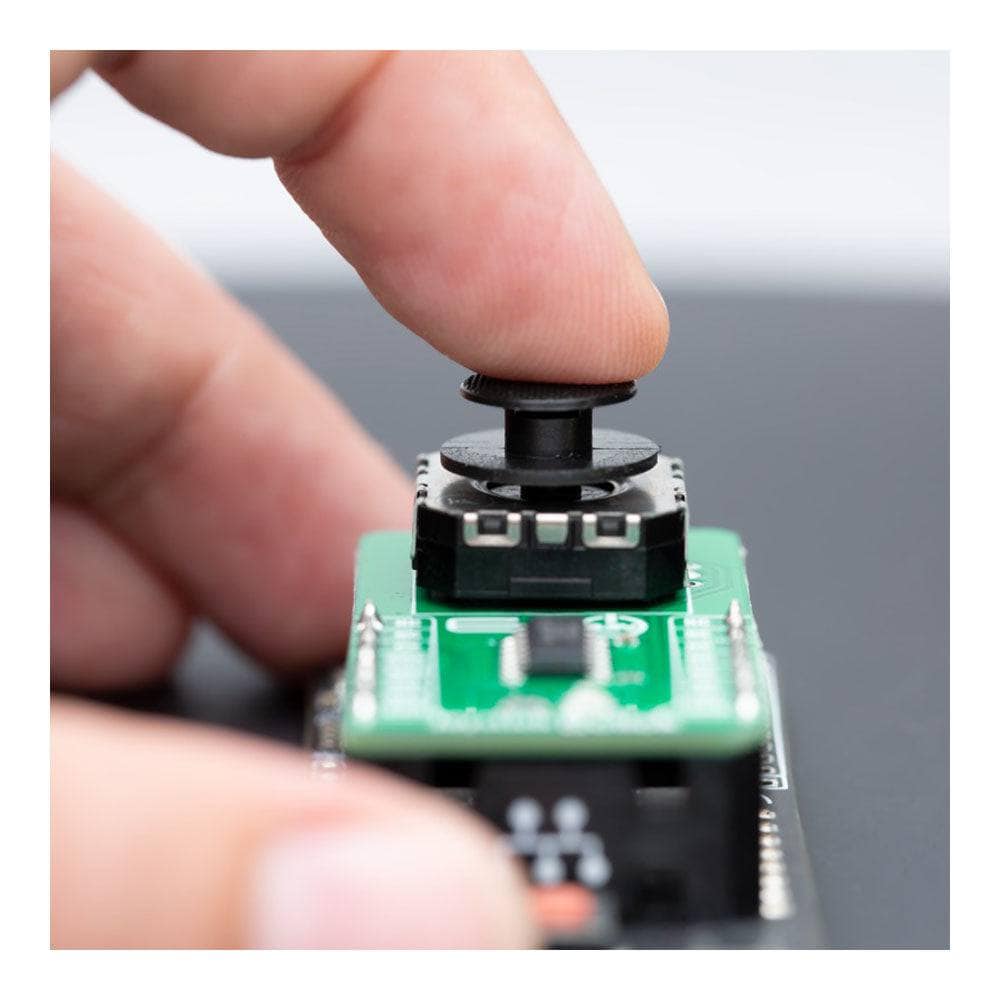
Key Features
Overview
Experience precise directional control with Joystick 3 Click Board™
Upgrade your directional analogue input needs with the compact and high-quality Joystick 3 Click Board™. This add-on board features the 2765 mini 2-axis analogue output thumbstick from Adafruit Industries, providing you with a 'self-centring' analogue-type joystick with a black rocker cap similar to PSP joysticks.
Precise control with 10kΩ potentiometers
The Joystick 3 Click Board™ is equipped with two 10kΩ potentiometers, one for up/down and another for left/right direction. These potentiometers ensure accurate and precise control, making this Click board™ perfect for various applications such as human-machine interface devices (HMI), robotics, and other control interfaces.
Seamless connection with mikroBUS™
The Joystick 3 Click Board™ connects seamlessly with mikroBUS™ through the MCP3204 12-bit A/D converter. This ensures fast and efficient data transfer, providing you with smooth and responsive control.
Simplified software development with mikroSDK-compliant library
Developing software for the Joystick 3 Click Board™ is a breeze with the mikroSDK-compliant library. This library includes functions that simplify software development, making it easier for you to get started with your project.
Ready-to-use, thoroughly tested product
The Joystick 3 Click Board™ comes as a thoroughly tested product, ensuring that it's ready to be used on a system equipped with the mikroBUS™ socket. This means that you can start using the Click board™ right out of the box, without any additional setup or testing required.
Upgrade your control interfaces and HMI devices with the Joystick 3 Click Board™ today!
Downloads
Erleben Sie präzise Richtungskontrolle mit Joystick 3 Click Board™
Erweitern Sie Ihren Bedarf an analogen Richtungseingaben mit dem kompakten und hochwertigen Joystick 3 Click Board™. Diese Zusatzplatine verfügt über den 2765 Mini-2-Achsen-Analogausgangs-Thumbstick von Adafruit Industries und bietet Ihnen einen „selbstzentrierenden“ Analog-Joystick mit einer schwarzen Kippkappe ähnlich den PSP-Joysticks.
Präzise Steuerung mit 10kΩ Potentiometern
Das Joystick 3 Click Board™ ist mit zwei 10-kΩ-Potentiometern ausgestattet, eines für Aufwärts-/Abwärtsbewegungen und eines für Links-/Rechtsbewegungen. Diese Potentiometer gewährleisten eine genaue und präzise Steuerung, wodurch sich dieses Click Board™ perfekt für verschiedene Anwendungen wie Mensch-Maschine-Schnittstellengeräte (HMI), Robotik und andere Steuerschnittstellen eignet.
Nahtlose Verbindung mit mikroBUS™
Das Joystick 3 Click Board™ lässt sich über den 12-Bit-A/D-Wandler MCP3204 nahtlos mit mikroBUS™ verbinden. Dies gewährleistet eine schnelle und effiziente Datenübertragung und ermöglicht Ihnen eine reibungslose und reaktionsschnelle Steuerung.
Vereinfachte Softwareentwicklung mit mikroSDK-kompatibler Bibliothek
Die Entwicklung von Software für das Joystick 3 Click Board™ ist mit der mikroSDK-kompatiblen Bibliothek ein Kinderspiel. Diese Bibliothek enthält Funktionen, die die Softwareentwicklung vereinfachen und Ihnen den Einstieg in Ihr Projekt erleichtern.
Gebrauchsfertiges, gründlich getestetes Produkt
Das Joystick 3 Click Board™ ist ein gründlich getestetes Produkt, das garantiert, dass es für den Einsatz auf einem System mit der MikroBUS™-Buchse bereit ist. Dies bedeutet, dass Sie das Click Board™ sofort nach dem Auspacken verwenden können, ohne dass zusätzliche Einrichtung oder Tests erforderlich sind.
Rüsten Sie Ihre Steuerschnittstellen und HMI-Geräte noch heute mit dem Joystick 3 Click Board™ auf!
| General Information | |
|---|---|
Part Number (SKU) |
MIKROE-5378
|
Manufacturer |
|
| Physical and Mechanical | |
Weight |
0.02 kg
|
| Other | |
Country of Origin |
|
HS Code Customs Tariff code
|
|
EAN |
8606027387265
|
Warranty |
|
Frequently Asked Questions
Have a Question?
Be the first to ask a question about this.








